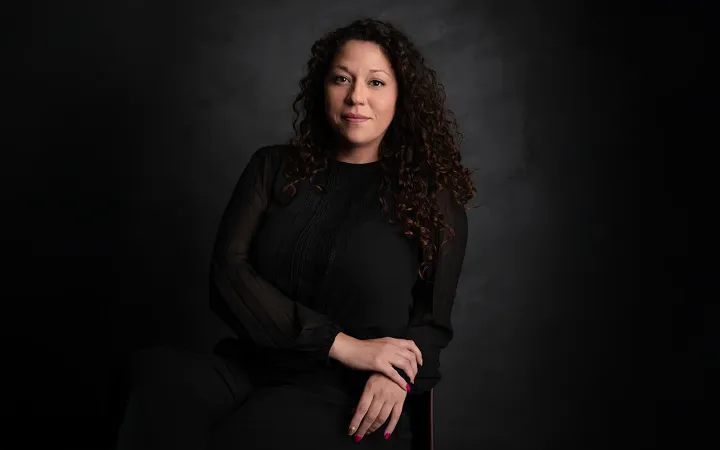Por Frida Mendoza
“Camino por la ciudad”, así empieza la canción de Belanova que está por cumplir 20 años de lanzarse pero que tras revivir en TikTok se convirtió en una tendencia, principalmente chilanga, cuyo objetivo es compartir pequeños clips de la vida en la ciudad. Me llama la atención y sin dudarlo me sumerjo y le doy toda mi atención a buscar en mi celular videos que capten esa esencia, sé que tengo esa especie de contenido.
Un video caminando sobre la Alameda Central, otro en la colonia Nochebuena, otro por Buenavista y otro en Chilpancingo son los primeros que encuentro en mi galería. Pura zona “céntrica”. San Cosme, Coyoacán, Portales también ilustran mi recopilación. ¿Por qué no tengo videos de otras zonas de la capital?
Caminar me gusta mucho y sé que haber nacido y habitado toda mi vida en la zona Centro en la Ciudad de México, ha propiciado este hábito pues algo es cierto: no es lo mismo ser peatón de la Cuauhtémoc, a serlo de Tláhuac, Iztapalapa o Magdalena Contreras, esto porque hay mayor cantidad de calles completamente peatonales, parques y espacios que en teoría son para “caminar libremente”.
Sin embargo, algo tenemos en común todas las personas que caminamos esta ciudad: no lo hacemos con la libertad que deberíamos. De acuerdo con la "Carta de los Derechos Peatonales" realizada por los integrantes de la Liga Peatonal, poder cruzar las calles con calma y seguridad es una prioridad, pero no se cumple y desde enero de 2019 y hasta marzo de 2024, la Secretaría de Movilidad capitalina registró que 783 personas murieron a pie en un siniestro vial, es decir, por atropellamiento.
"Los peatones somos, en la cadena de movilidad, los más vulnerables. Principalmente porque no tenemos un vehículo que nos proteja, porque vamos a una velocidad muy baja a comparación de los otros vehículos y no estamos en posibilidad de defendernos", me responde Aldo González, secretario general de la Liga Peatonal.
Me llegan a la mente un sinfín de cruces complicados. El de Buenavista donde se atraviesa el Eje 1 Norte e Insurgentes, viene a mi mente pues entre las unidades del Metrobús, automóviles, motocicletas y bicis, toca correr en multitud para aprovechar esos segundos al ritmo del claxon que apresura. Circuito Interior es otro, en algunos tramos la opción es en las alturas de un puente peatonal donde el vértigo acecha al tiempo que la inseguridad es latente, en otros tramos como en Marina Nacional o Melchor Ocampo se siente imposible.
Otros de los derechos peatonales que establece la carta son las banquetas amplias. ¿Cuántas calles no son tan pequeñas que ni siquiera podrían considerarse banquetas? Desde alcaldías como Iztapalapa o Coyoacán con sus calles angostas hasta la Miguel Hidalgo y Álvaro Obregón con avenidas como Constituyentes, el tema es similar: el paso es reducido a una persona, los autos circulan a pocos centímetros de ti y no hay de otra más que caminar a toda velocidad.
Pero hay otra cara de la moneda: las banquetas amplias se convierten en un espacio obligado a compartirse con vehículos como motocicletas o bicis. Ya sea el Parque de los Venados, el Parque Mascarones o el camellón de la Avenida Álvaro Obregón, de pronto un claxon o campanilla te alerta en la banqueta y hay que abrir el paso. ¿En dónde se puede caminar libremente entonces?
La seguridad para las mujeres también es contemplada como parte de los derechos peatonales y en conjunto con la amplitud de las banquetas, sin duda mi pensamiento sobre la diferencia de ser peatón en el centro a serlo en zonas más lejanas es más evidente.
Recuerdo la ocasión en que recorrí calles de Tláhuac para un reportaje. Helena fue mi entrevistada pues vive en la zona y mientras recorríamos al atardecer algunas colonias como la Del Mar me confesó que si de noche no viajaba en mototaxi o en algún taxi de aplicación porque ya no le alcanzaba, prefería caminar sobre el arroyo vehicular que en las banquetas reducidas y oscuras donde el riesgo a ser víctima de acoso, abuso o ser privada de su libertad era latente. “Lo he evaluado muchas veces y prefiero que me atropellen a otro delito”, me dijo.
No olvido cuando Sara fue acosada en Vasco de Quiroga, una avenida hecha principalmente para transitar en auto y no a pie, cuando caminaba de la escuela hacia el paradero del Centro Comercial Santa Fe y un sujeto desde su auto la vulneró. O hace un mes cuando al salir del Metro Panteones, un trayecto menor a 20 minutos en la colonia Argentina se sintió eterno por sus banquetas reducidas, cubiertas por árboles y miradas de acoso que me hicieron preferir pagar 50 pesos por un taxi de aplicación para el regreso.
La respuesta de Helena, la experiencia de Sara o la mía puede visualizarse en las estadísticas, no son hechos aislados.
La Encuesta Nacional sobre la Dinámica de las Relaciones en los Hogares (Endireh) realizada por el INEGI en 2021 explica que en la violencia a mujeres en el ámbito comunitario, la Ciudad de México tiene el segundo lugar de prevalencia y de esta, las calles son el espacio donde más ocurren. El 51.4% de las mujeres de 15 años o más encuestadas respondió que fueron vulneradas en la calle, esto por encima de cualquier transporte, mercado y espacio público.
Pero si hablamos de toda la población en general, la Encuesta Nacional de Victimización y Percepción sobre Seguridad Pública (Envipe) realizada en 2023 por el Inegi muestra que el 67.3% de las personas mayores a 18 años de la capital se sienten inseguras en la calle.
El Programa de las Naciones Unidas para los Asentamientos Humanos (ONU-Hábitat) señala que entornos de violencia e inseguridad reducen la libertad de movimiento y la capacidad de participar en la vida pública, de servicios esenciales o de disfrutar oportunidades culturales y de ocio. En sí, repercute de manera negativa en la calidad de vida.
Pero aún así, entre todo un mar de cifras, muchísimas personas no queremos dejar de recorrer la ciudad monstruo, yo tengo 31 años haciéndolo y no sé andar en bici ni manejar así que mis opciones son gastar suela o abordar algún transporte.
Gastar suela, vaya concepto. Desde mis primeros años trabajando como periodista se me dijo que nadie podía llamarse así si no hacía tal acción. Es decir, sin salir a la calle, investigar y entrevistar no podíamos conocer lo que estamos reporteando.
Por fortuna, antes de autonombrarme como periodista, soy peatona y gastar suela era algo que ya hacía.
Para poder ejercer mi trabajo, así como miles, se necesita salir a la calle y la CDMX, a diferencia de muchas otras ciudades del país, tiene las condiciones climáticas adecuadas para estar en exteriores y una amplia red de transporte público -que si bien tiene una serie de problemáticas conecta la ciudad a casi toda hora- para poder moverse.
En la Ciudad de México aprendes a caminar rápido, caminas en multitudes gigantescas y si naces y creces chilango te vas a sorprender al conocer otras ciudades en las que no se camina más que unos pasos. Caminar debería ser reconocido como un derecho, dicen urbanistas, y debe contemplarse dentro de cualquier plan de movilidad.
“Se pensaba que el urbanismo y la planificación de desarrollo urbano es una ciencia, digamos, exacta o fría, o sea que la actuación en términos de mejora de movilidad afectaba en la misma forma a mujeres y hombres pero no es así, las evidencias y experiencias resaltan que hay necesidades específicas y particulares al recorrer la ciudad. No solo se puede generalizar y no hay fórmulas mágicas que de un momento a otro mejore la movilidad peatonal”, me responde Aldo González quien además de ser activista peatonal es arquitecto urbanista.
Una de las áreas de oportunidad, menciona, es el mantenimiento del espacio público con ejemplos como la eliminación de obstáculos visuales de las aceras, evitando climas de inseguridad. También señala la urgencia de pensar de una forma integral toda política pública relacionada con movilidad pues al hablar de ello generalmente se hace pensando en el transporte motorizado y no en el humano.
“Las calles que son el espacio público por excelencia de las ciudades y en la medida que incorporemos elementos que la hagan habitables como son las bancas, arbolado y otro tipo de mobiliario que fomente la interacción y la convivencia, será posible recobrar esta humanidad y capacidad de convivencia real en nuestras calles y en nuestras ciudades”, me dice el activista peatonal.
Las posibilidades son infinitas, me explican, y si bien hay algunos avances en la reducción de muertes viales en peatones conforme avanzan los trimestres, se trata de un número que sigue creciendo y no uno que se estanque. Y la misma situación ocurre con la percepción de inseguridad y violencia.
Pero entonces, después de entrevistar recuerdo que una conclusión tras entrevistar es que hay solución, existen posibilidades. La Ciudad de México puede ser aún más caminable, tanto como un paseo dominguero por el Parque Bicentenario mientras tienes un changuito de peluche en la cabeza, que caminar en Cuautepec debe ser igual de apacible que sobre Paseo de la Reforma mientras ves las jacarandas florear en primavera.
Que cualquier habitante de la capital, sea un adulto mayor, un infante o una persona con discapacidad, merece recorrer su ciudad libremente con las adecuaciones necesarias para que el espacio se adapte a ellos, no al revés.
Quisiera pensar que si así lo deseara y nuevamente hiciera un TikTok con videos caminando la ciudad, pudiera encontrar en la galería de mi celular videos que atestiguan mis pasos en cualquiera de las 16 alcaldías porque pude grabarlo sin temor a que me acosen o me roben el celular, porque cruzando la calle nunca encontraré uno ya que la responsabilidad vial es comunitaria.
** Este texto fue ganador de Mención Honorífica en la categoría Ensayo del concurso "La CDMX en movimiento" organizado por el Programa Universitario de Estudios sobre Democracia, Justicia y Sociedad (PUEDJS) de la UNAM.

Las opiniones expresadas son responsabilidad de sus autoras y son absolutamente independientes a la postura y línea editorial de Opinión 51.






Comments ()